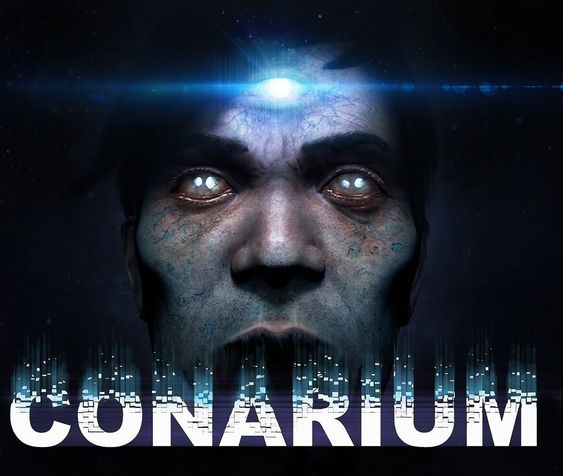Conarium
I admit, this review is going to be a bit more of a ramble than usual. This is not a slight on the game, but is instead a consequence of me spending way too long looking for a specific lever, trying to use a walkthrough to figure out where the lever was, and then musing on the nature of modern adventure gaming.
This is game reviewing with autism, dear reader. May you enjoy the ride.
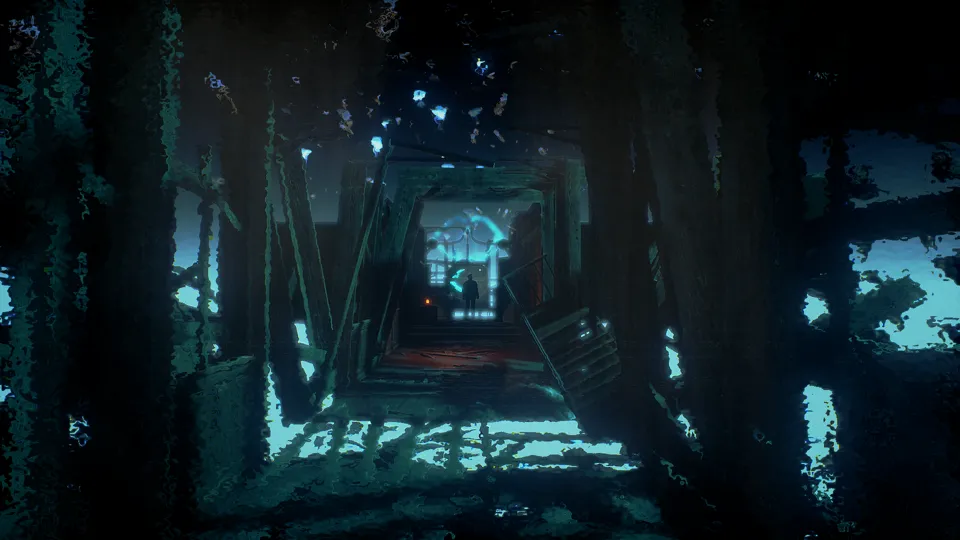 This is always an excellent omen for any adventure.
This is always an excellent omen for any adventure.
Conarium is a horror adventure game. Based on “At the Mountains of Madness” by HP Lovecraft, it retells the story of the book, guiding the player through eerie environment after eerie environment, and towards a horrifying conclusion. Much like with the book itself, it tells its story through documentary evidence, with the player learning the narrative through bits of paper and artefacts left behind by a vanished crew. Unlike the book, however, Conarium places the player in the heart of the action, having their life be in danger, rather than just recounting the danger after the fact. The game invests in an excellent soundscape and otherwordly visual design that do wonders to convey the Lovecraftian essence of the story being told. Conarium understands how Lovecraft tells a story and the importance of communicating through that language. It doesn’t show the horror, but lets the player build the horror for themselves through description and mystery. Of course, when monsters do finally appear in Conarium, they look a bit silly, but then, most iterations of Lovecraftian horrors look a bit silly. I’m not going to fault a game for not being able to truly capture an indescribable eldritch being.
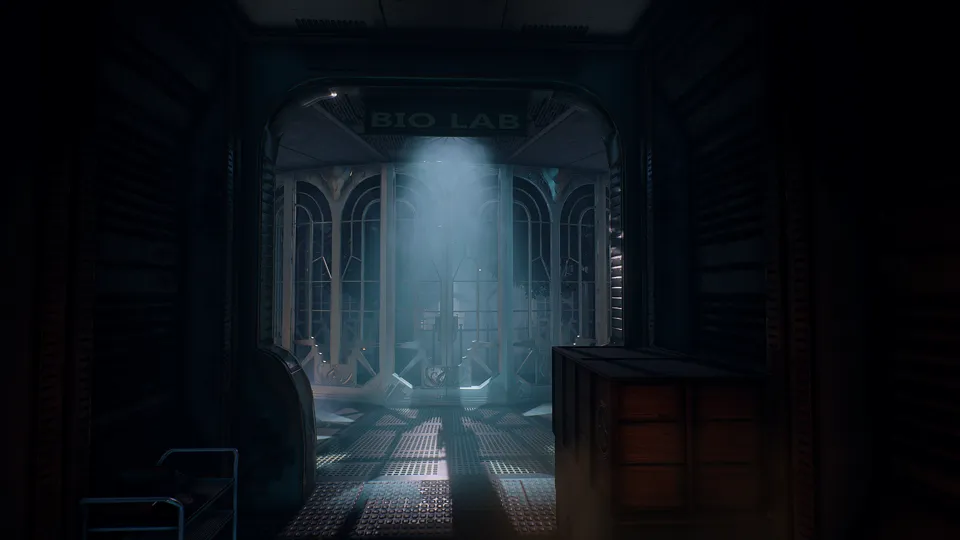 No sign that says “Bio Lab” ever leads to happy places.
No sign that says “Bio Lab” ever leads to happy places.
For all its understanding of its source material, Conarium’s actual gameplay falls a bit flat. In my introduction, I mentioned struggling to find a particular lever, and while I recognise that’s partly due to my own lack of skill, it also reflects the gameplay more generally. There is some light puzzling and some light danger here and there, but for the most part, the game is propelled forwards by the player’s own need to investigate the mystery. This in and of itself is not a problem - I love a good mystery. However, the very mechanic the game employs to better channel Lovecraft’s storytelling style becomes the issue keeping the player from truly getting lost in the story. Rather than being propelled forward naturally and acting as my character would, I was instead rummaging through every drawer and box, looking for every little clue, whether I needed to or not. The act of exploring became detrimental to the story, distracting from whatever task I’d been assigned to, and making me lose the forest for the trees. Rather than being propelled by the story, the game instead asks that I be propelled by collectibles and the achievements that accompany them. I am asked to hunt, not to solve a mystery or tell a story, but to fulfil that completionist compulsion. It substitutes collectibles for gameplay.
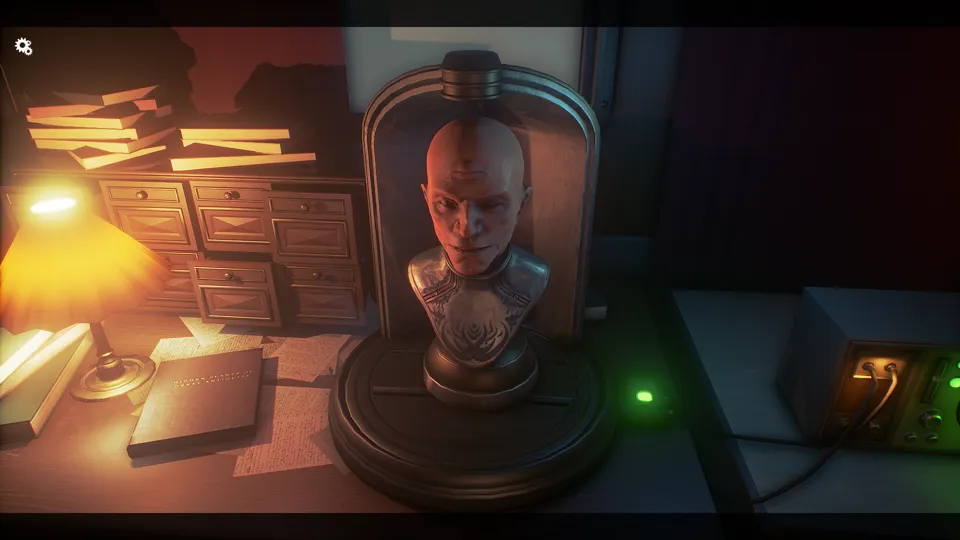 I don’t trust this guy. He seems sketchy.
I don’t trust this guy. He seems sketchy.
To be clear, Conarium is not the first game I’ve played where collectibles felt distracting from the game. It is, however, the game where I felt compelled to actually care about the collectibles, and thoroughly disappointed by their implementation. I’d argue collectibles and similar achievement-hounding mechanics are becoming increasingly common in adventure games, and especially walking simulators. This increasing presence of achievements and collectibles exist to make the player scour their environment - potentially increasing playtime - but also to sate the desire for replayability that seems to increasingly dominate the conversation around whether a game is “worth it.” Conarium, despite its fairly linear world, still advertises multiple endings, asking the player to replay to try for another ending. Collectibles and the achievements associated with them provide a further incentive, honing in on that completionist mindset to demand a player replay an already-told story, just so they can feel like the game is truly completed.
I’ve discussed the idea of multiple endings and replayability hurting a game in my Church in the Darkness review. In that review, I discussed the idea that creating an endlessly replayable game means the game is set up to fail at the elements that should make it compelling. While Conarium isn’t set up to be endlessly replayable, the collectible system and multiple endings water down the actual interaction with the story. What should be a gradual unfurling of the story instead becomes a slog of clicking through every interactable object in the hopes of finding the one that actually gives the information or object that’s needed.
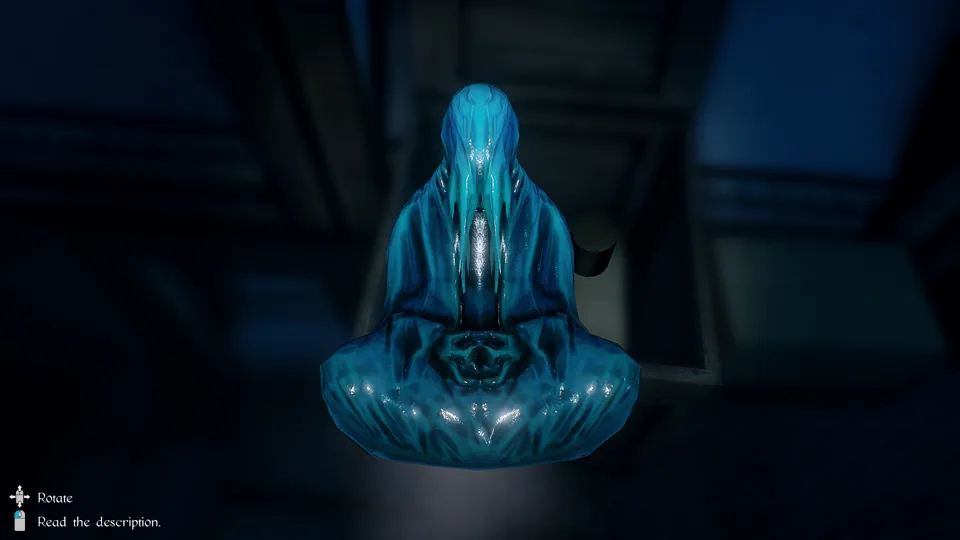 No idea what this is. Probably not important.
No idea what this is. Probably not important.
The irony is that, if there were any game that could justify this collectible hunting mechanic, it’s Conarium. Lovecraft famously tells his stories through artefacts and documents, creating a cobbled-together version of events that may or may not reflect the truth, but does at least reflect something that can be accepted as the truth. Lovecraft asks his readers to read between the lines with the investigator, becoming an investigator themselves, and deciding reality based on the documents the investigator presented. Conarium absolutely had the opportunity to present its story through a truly Lovecraftian lens via documents and artefacts. Instead, it comes painfully close, but veers too far into the collectible mechanic, diluting the power of the trinkets and documents, and instead, making the role of the investigator a slog.
There is a lot that Conarium gets right and does well. Its vibes and atmosphere are fantastic, and it does a wonderful job leading the player through its horror. However, its lack of faith in its own story to carry the reader and desire to add replayability dilute the power of that world and narrative, creating an overall middling experience.
Developer: Stormling Studios
Genre: Horror, Adventure
Year: 2017
Country: Turkey
Language: English
Play Time: 3-4 Hours
Youtube: https://youtu.be/ORCpnXVRGE8
